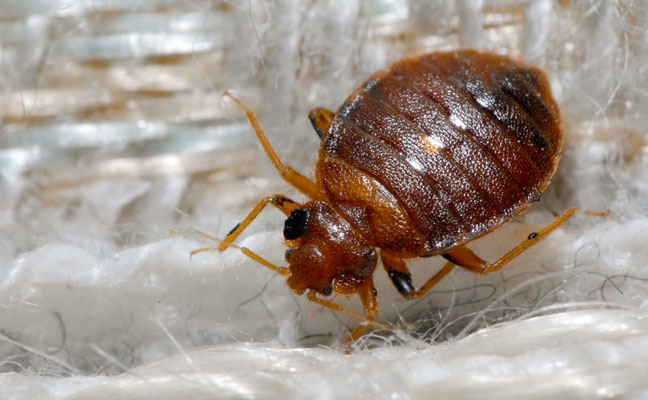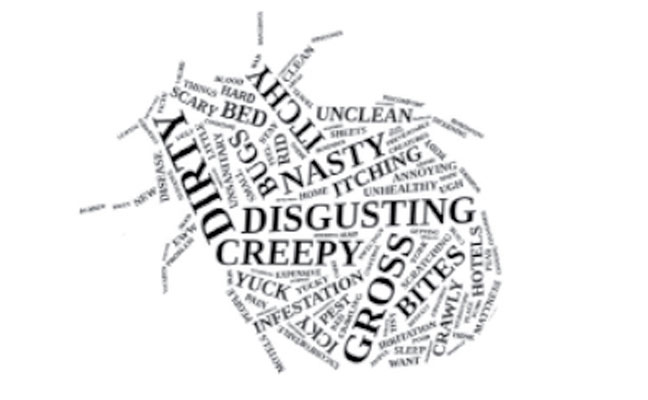
Photo: courtesy of, and copyrighted by, Gene White, pmimages@earthlink.net
At the most recent National Pest Management Association (NPMA) Global Bed Bug Summit event, the Professional Pest Management Alliance (PPMA) presented a seminar on “Getting the Word Out on Bed Bugs: Social Media and Public Relations Campaigns.” Reflecting back on that presentation, there are several great points to reiterate about marketing this business segment — and it’s more important than ever as we emerge from a somewhat quiet period for Cimex lectularius calls during the pandemic. People are traveling again, and so are the bed bugs.
You might be so focused on marketing your general pest control services, that it may not have occurred to you that allocating some of your budget and efforts to just the bed bug segment could boost your business in a quick and positive way.
PUBLIC AWARENESS RISES

Cindy Mannes
Back when the bed bug resurgence began in the late 1990s/early 2000s, one of our major hurdles was getting the public to believe bed bugs were real, and not a figment of fairy tales (“Sleep tight, don’t let the bed bugs bite”). Today, per a recent PPMA study, nearly 100 percent of the public is aware that these are real insects, and 73 percent believe infestations are increasing.
PPMA’s research also shows that customer reaction to learning they have bed bugs is most often “surprise,” “shock” and “alarm.” They describe bed bugs as “dirty,” “disgusting,” “creepy,” “gross” and “itchy.” However, what used to be secretive and taboo to talk about, the openness of social media has led many affected homeowners to share their thoughts and feelings, and for their friends and families to sympathize (while being horrified for them, but not blaming them).
KEY MARKETING MESSAGES
Consider the following for your upcoming marketing, social media and training programs and initiatives for bed bug service:
Stop the stigma. When you talk about bed bugs, whether it’s at your initial visit, in your marketing materials or in social media posts, be sure to remove the stigma of infestation:
- It is not the customer’s fault. Bed bugs can infest anywhere and everywhere in the U.S.
- It should not be equated with filth or sanitation problems, be it a home, hotel or other account.
- Offices, buses, stores, movie theaters, laundromats — bed bugs are found in more than just “beds.”
- It is not indicative of socioeconomic status.

Thanks to a consumer survey, the PPMA formed this “word cloud” of terms the public associates with bed bugs. IMAGE: PPMA
Encourage prevention. Also, talk about staying vigilant about prevention. This can be something you work into every new account visit. You may be there for ants, but are your customers aware they could easily get a bed bug infestation just from bringing in uninspected secondhand furniture, for example?
Avoid scare tactics. Stay away from being an alarmist (you want them to sleep at night), but if you know your homeowner client is going to leave for a vacation soon, for example, hand over a paper with travel tips for how to inspect a hotel room and how to unpack from a trip to prevent bringing bed bugs into the home. Need some help with that particular messaging? Check out the NPMA press release at PestWorld.org/news-hub/press-releases/summer-is-peak-season-for-travel-and-bed-bugs-how-to-prevent-an-infestation. Citing the NPMA as a source also lends professional, third-party credibility to your discussions.
Communicate your expertise. Reiterate how difficult bed bugs can be to control, and why getting a professional in at the first signs of an infestation is important. Key points to convey include:
- While bed bugs are not known to transmit disease, they do feed on human hosts and ingest blood. Their bites can result in itchy, red welts, and there is concern of secondary skin infections, such as methicillin-resistant Staphylococcus aureus (MRSA). Some people are allergic to the bites as well.
- Hitchhiking and quick breeding capabilities make this pest very elusive.
- This is not a pest that can be controlled effectively with do-it-yourself measures.
- Whomever the consumer chooses, he or she should inquire about the company’s bed bug experience. This is your chance to note that you and your team are licensed, bonded, with many years of experience, etc. NPMA members also are listed in the PestWorld.org “Find a professional” database by ZIP code.
Celebrate the date. Another way to keep your company and bed bug control linked in customers’ minds is to mark “Bed Bug Awareness Week” when it rolls around the second week of June. The NPMA and PPMA do a lot to promote this weeklong event on social media and on other channels, and the more participation by pest management professionals (PMPs), the better. We want to educate consumers consistently and with useful information. They should understand the risk, but not be frightened by it, because there are ways to both prevent an infestation and, with today’s technologies, get it taken care of quickly by a trusted professional.
When it comes to bed bugs — and other pests — be your customers’ voice of reason, providing accurate information and helpful advice.
Leave A Comment